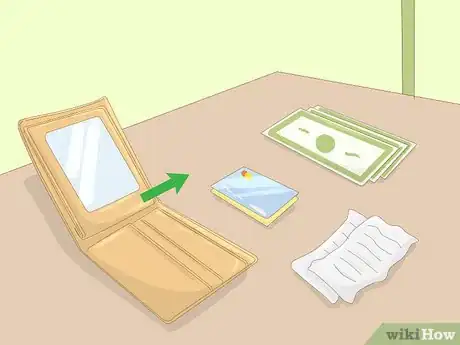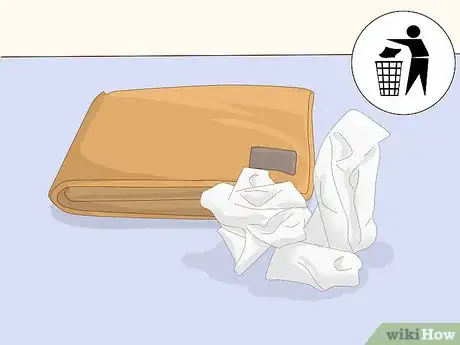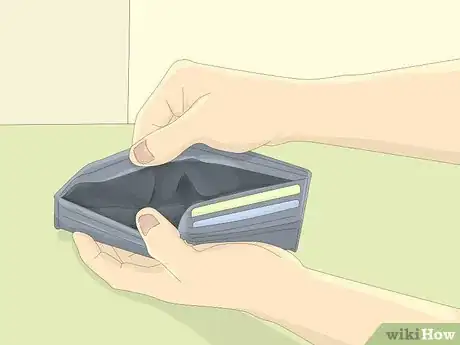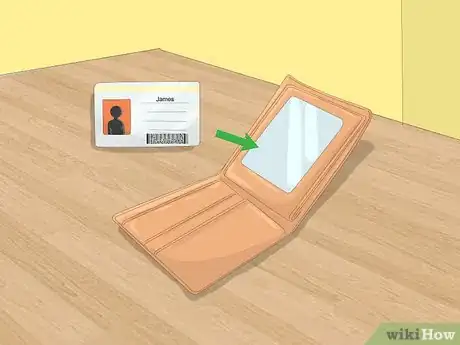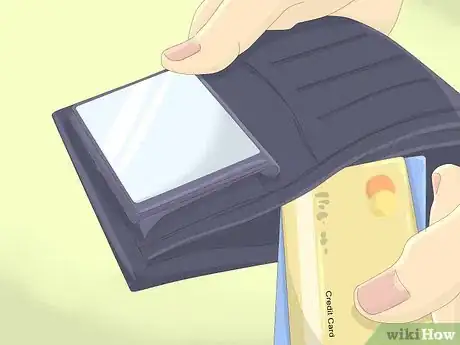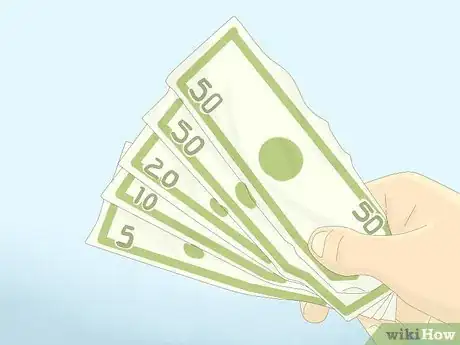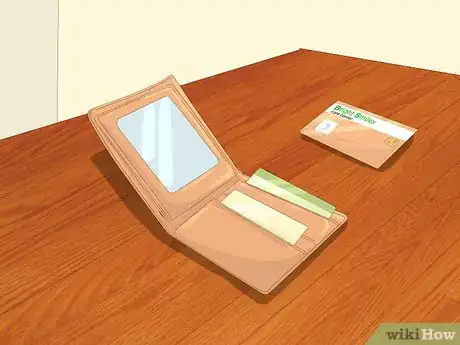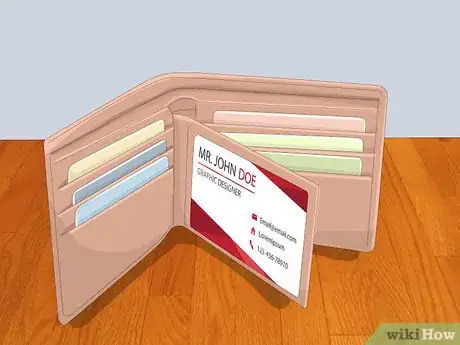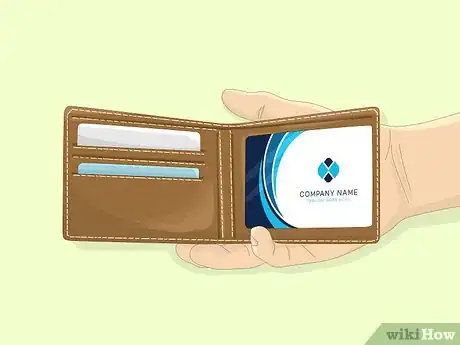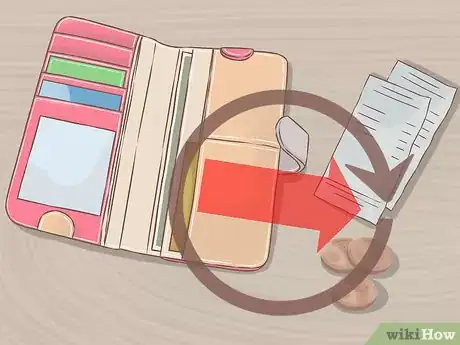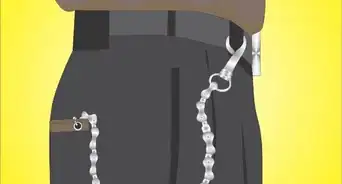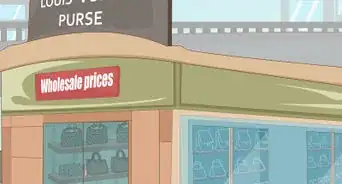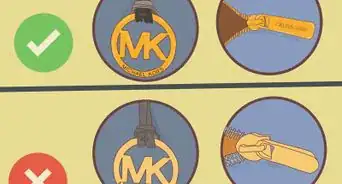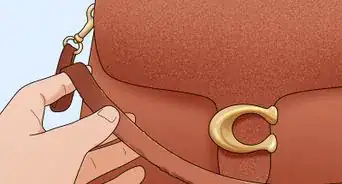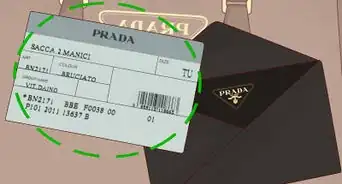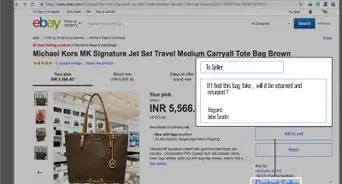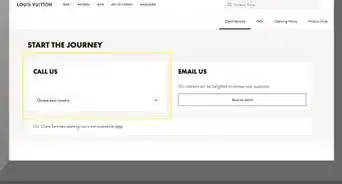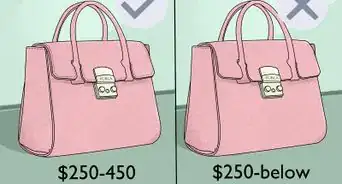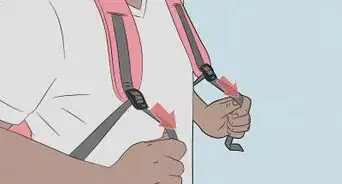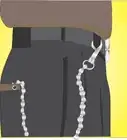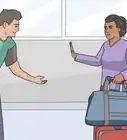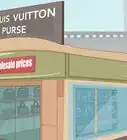This article was co-authored by wikiHow Staff. Our trained team of editors and researchers validate articles for accuracy and comprehensiveness. wikiHow's Content Management Team carefully monitors the work from our editorial staff to ensure that each article is backed by trusted research and meets our high quality standards.
This article has been viewed 94,321 times.
Learn more...
When you’re wallet is feeling too bulky, or you can’t ever seem to find what you need, it’s time to clean it out and rearrange it! Empty out your wallet and get rid of unwanted and useless items, then look at what’s left to decide what you really need. Reorganize your wallet neatly with the items you use on a regular basis to make your wallet less bulky and clutter-free!
Steps
Cleaning Out Your Wallet
-
1Take everything out of your wallet and put it on a table. Empty out the entire contents of your wallet so you will be able to reorganize it. This will help you evaluate what’s in your wallet and get rid of things that you don’t need.
- You can take this chance to turn your wallet upside down and shake out all those dust bunnies as well!
-
2Throw away any trash, unneeded cards, and other useless items. Toss obvious pieces of trash out first, such as scraps of paper, gum wrappers, old receipts, or expired coupons. Throw away any unwanted business cards, loyalty cards, membership cards, and anything else you don’t actually use.
- Really stop any think about whether you need each and every item. For example, you might have a stash of business cards that you felt obligated to take, but deep down you know you’ll never use them. Get rid of them!
Tip: If there are any receipts you actually need to keep, start a filing system at home to keep them in.
Advertisement -
3Clean out your wallet once a week to get rid of junk. Do a weekly clean-out to prevent the accumulation of unneeded items in your wallet. You will have a much more organized and less bulky wallet this way.[1]
- You don’t have to dump everything out on your table every week and go through the whole process again, but at least have a quick look through your wallet and clear out the trash and other unnecessary things that end up in there.
Putting the Essentials in Your Wallet
-
1Put only the ID that you actually need and use into your wallet. Put your most important ID into the little plastic ID window pocket. This will normally be your driver’s license, if you have one, or some other type of photo ID.[2]
- A single form of photo ID is usually sufficient for any situations that you might run into where you need to present it, so there’s no need to carry more.
- Leave other important forms of ID, such as a social security card, in a safe place at home. There’s no need to carry sensitive forms of ID around, and you definitely don’t want to lose it if your wallet gets misplaced or stolen.
-
2Choose 2-3 credit and debit cards to carry in your wallet. You will usually want your debit card so that you can withdraw cash when needed. Select 1-2 credit cards that you use regularly to carry in addition to your debit card.[3]
- Keep all these bank cards near each other in your wallet, in separate card slots, so that you can easily find them at a cash register or when paying a bill.
- Leaving some cards at home will also ensure that you have backups in case you lose your wallet.
Tip: If you have a lot of credit cards and you’re having trouble choosing, opt for credit cards with points and rewards systems so you use those and build up points to earn rewards.
-
3Organize a small sum of cash by value and put it in the bill holder. It’s always a good idea to carry some cash with you in case you run into a situation where you can’t pay with a card. Organize about $30-50 in bills by their denomination and stick them in the slot for cash in your wallet.[4]
- If you typically take out cash from ATMs in large sums, then leave most of it at home and just take an amount with you that you might actually end up using while out and about.
-
4Carry only the membership and loyalty cards you use regularly. Look through the other piles of cards that were in your wallet and decide which ones you are likely to use. Group similar cards together in the same slots of your wallet.[5]
- If there are cards that you want to keep, but don’t use much, just leave them in a drawer at home and grab them on the way out the door if you are headed somewhere that you want to use one.
Preventing Future Clutter
-
1Digitize any information that you can to avoid carrying it with you. Put the contact information from business cards of people you actually might contact into your phone and get rid of the cards or leave them at home. Use apps on your phone to store card info to limit the number of cards you need to carry around.[6]
- If you have an iPhone you can use Apple Wallet to carry digital card info, or if you have an Android phone you can use Google wallet.
-
2Put business cards in a separate business card holder if you use them. Carrying a bunch of your own business cards to hand out in your wallet is an easy way to bulk it up. Get a separate business card holder to carry your cards and free up space in your wallet.[7]
- You can also digitize your own business cards by using a mobile app to create digital versions that people can read with their phones by scanning a QR code.
Tip: Get a hard business card holder case that will protect your cards, so they’ll be nice and crisp when you hand them out.
-
3Store your loose change somewhere other than your wallet. Coins take up a lot of space and add a lot of weight to your wallet. Take them out and put them in a jar to save up for a rainy day.[8]
- If you actually use change and insist on carrying it, then use a wallet that has a small zippered pouch for coins.
-
4Choose a wallet that is a suitable size for your needs. Get a wallet that has just enough space for your essential items. This will keep you from filling it up with things you don’t actually need.
- You can get a small front-pocket wallet, that just has room for cards, and carry a small amount of cash separately if needed.
Community Q&A
-
QuestionWhere do I put my coins if there aren't places for it?
 T. ChinsenTop AnswererIf there is a pocket to spare, keep it as the one that is closest to where the wallet folds. The pressure of any cards in the pockets will hold the coins in place. It is possible to slip a few coins between cards if the card had raised numbers and letters. Keeping the numbers nearest the opening of the pocket will give the maximum amount of space. Otherwise you can find a coin purse to hold your change.
T. ChinsenTop AnswererIf there is a pocket to spare, keep it as the one that is closest to where the wallet folds. The pressure of any cards in the pockets will hold the coins in place. It is possible to slip a few coins between cards if the card had raised numbers and letters. Keeping the numbers nearest the opening of the pocket will give the maximum amount of space. Otherwise you can find a coin purse to hold your change.
References
- ↑ https://www.today.com/money/take-charge-your-wallet-5-steps-1D80232162
- ↑ https://www.today.com/money/take-charge-your-wallet-5-steps-1D80232162
- ↑ https://www.today.com/money/take-charge-your-wallet-5-steps-1D80232162
- ↑ https://www.thesimpledollar.com/whats-in-your-wallet-how-i-organize-the-finances-in-my-pocket/
- ↑ https://www.thesimpledollar.com/whats-in-your-wallet-how-i-organize-the-finances-in-my-pocket/
- ↑ https://stylecaster.com/how-to-organize-your-wallet/
- ↑ https://stylecaster.com/how-to-organize-your-wallet/
- ↑ https://stylecaster.com/how-to-organize-your-wallet/
